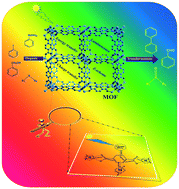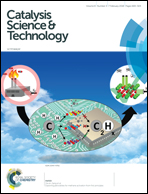A mechanistic approach towards the photocatalytic organic transformations over functionalised metal organic frameworks: a review
Abstract
Photocatalytic organic transformations driven by functionalised metal organic frameworks (MOFs) are a green perspective for fine chemical synthesis. In the class of highly porous materials, MOFs are unparalleled in their degree of tunability and structural diversity and range of physical and chemical properties such as large surface area, permanent porosity, large void volumes, and framework flexibility, because of which they can act as a sustainable alternative for inorganic semiconductors. MOFs are the latest class of ordered porous solids being intensively studied as a novel class of hybrid organic–inorganic materials as nanophotocatalysts in the field of chemistry, materials science, chemical engineering, etc. Although the photocatalytic application of MOFs is still in the early stages compared with their other applications such as gas storage, separation, and heterogeneous catalysis, the currently available results have revealed that functionalised MOFs are very active as photocatalysts. The present review aims to discuss the various synthetic methods, post-synthetic modifications, MOF catalysed organic reactions and proposed mechanistic pathways for photoinduced organic transformations.



 Please wait while we load your content...
Please wait while we load your content...